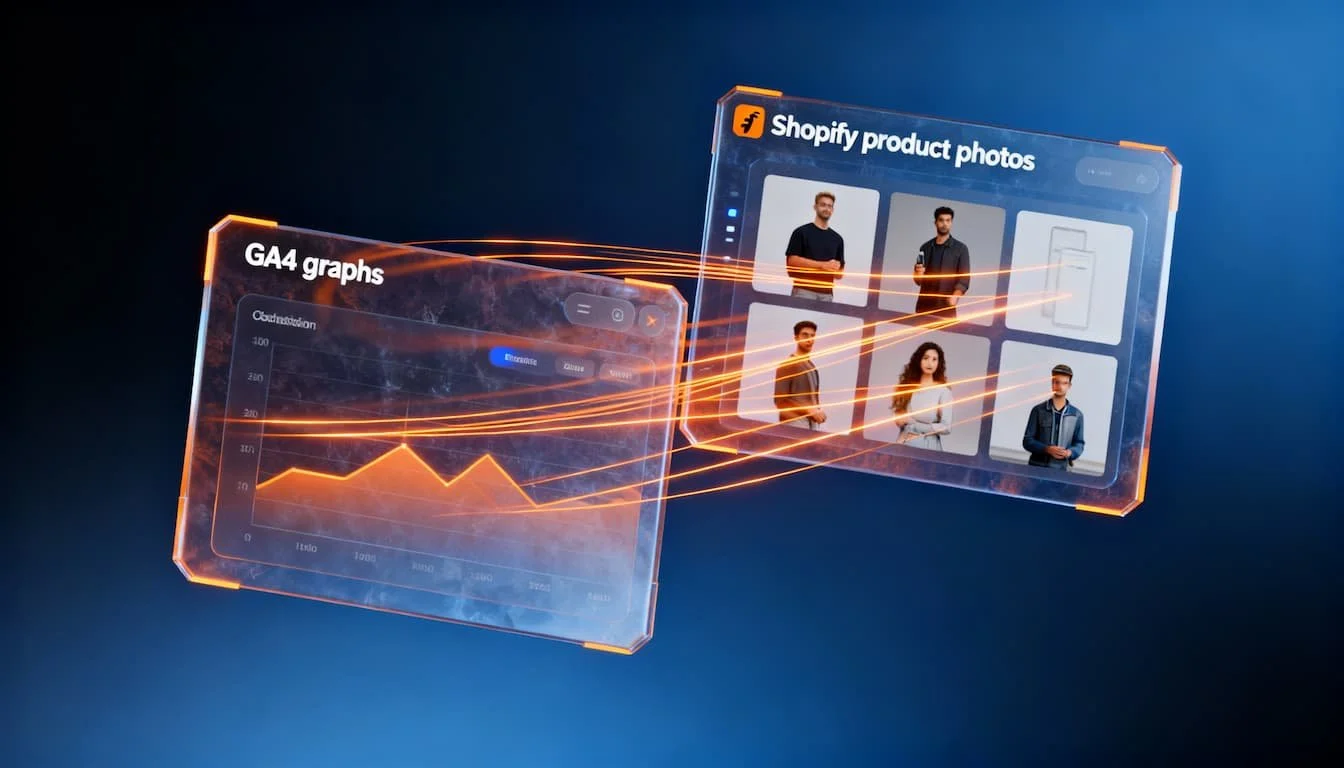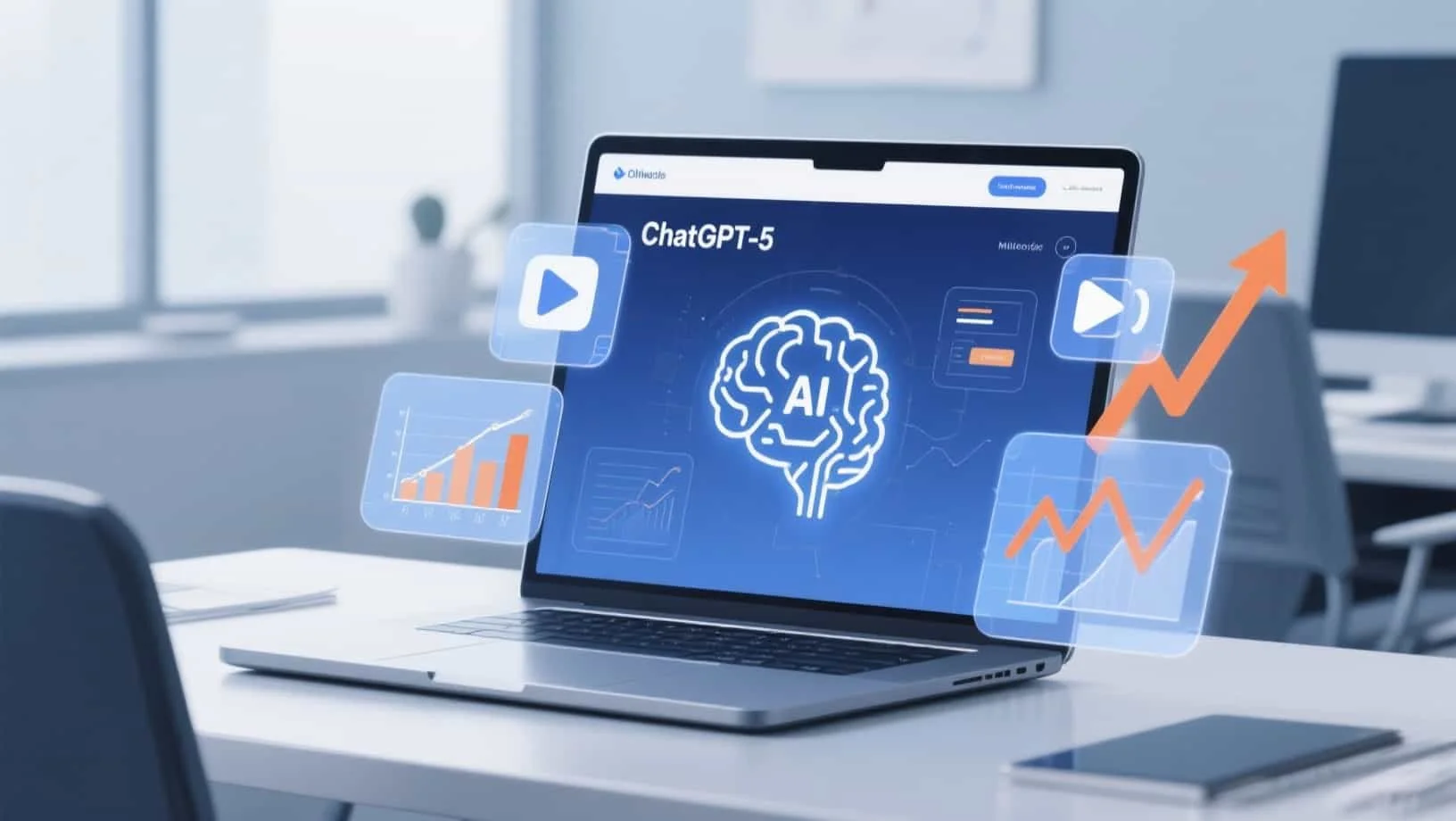Conversion optimization: how AI and personalization increase your returns
Conversion Rate Optimization (CRO) is becoming increasingly critical in a digital landscape where advertising costs continue to rise and competition increases. In 2025, smart companies will make the difference by combining AI-driven personalization with data-driven optimization. But how do you approach this strategically?
- Necessity 2025: Advertising costs are rising, CRO prevents 60% of marketing budget wastage
- AI revolution: Dynamic personalization, predictive pricing, and real-time content adjustments
- Proven results: 187% conversion increase in 6 weeks via segmentation and progressive profiling
- Hyperpersonalization: Real-time behavioral data, cross-device journey mapping, and micro-moment optimization
- New paradigm: From campaign thinking to ecosystem thinking with continuous AI optimization
Why CRO is no longer optional in 2025
“Trying to increase your sales by simply sending more traffic to a website with a low conversion rate is like trying to fill a leaky bucket by pouring more water into it instead of plugging the holes.”
Source: Bryan Eisenberg - Conversion Rate Optimization Process
The reality? Companies that invest in SEO strategies or performance marketing but neglect their conversion funnel waste up to 60% of their marketing budget. With modern AI tools and personalization technology, that is no longer acceptable.
AI-driven e-commerce optimization: beyond A/B testing
Modern Shopify webshops can go far beyond traditional split tests. The new standard includes:
Dynamic product recommendations that adapt to browsing behavior and purchase history. Machine learning analyzes which products are most likely to lead to conversion for specific customer segments.
Real-time personalization of content, headers, and call-to-actions based on traffic source, geographic location, and previous behavior. A visitor from Facebook sees different messaging than someone who comes in via Google Ads.
Predictive pricing where AI suggests optimal price points based on inventory, season, and competitor analysis.
At ClickForest, we implemented an AI segmentation system for a Belgian beauty retailer that increased conversions by 34%. New visitors saw testimonials and reviews, while returning customers were immediately shown product variations and complementary items.
B2B lead generation: personalization at scale
For service providers and B2B companies, conversion optimization revolves around qualified lead generation. The winning approach combines:
Dynamic landing pages that automatically adjust content based on UTM parameters, sector, and company size. An IT manager sees different arguments than a CMO.
Intelligent form behavior where questions appear progressively and adapt to previously given answers. Friction is minimized without losing qualification.
Automated follow-up via platforms such as HubSpot or Make.com that provide lead nurturing based on behavior score and engagement.
Maryn McKenna, growth expert at Salesforce, emphasizes: "You should test everything. Not because you're unsure, but because your users are unpredictable." This mentality becomes crucial when you use AI automation for lead qualification.
For a Flemish consultancy group, ClickForest developed an intelligent chatbot that asks intake questions and forwards qualified prospects directly to Calendly. Result: 42% more booked consultations within the first month.
Practical AI applications in conversion optimization
Modern AI tools are revolutionizing how we approach CRO:
Predictive heatmapping shows where users are likely to click before you run A/B tests, which drastically shortens test periods.
Automated copywriting generates variations of headlines, CTAs, and product descriptions that are specifically targeted at different customer segments.
Behavioral triggers activate pop-ups, discounts, or content recommendations based on scroll percentage, time on page, and exit intent.
Rand Fishkin of SparkToro states: "AI is not the enemy of creativity. It's the catalyst for scalable experimentation." ClickForest applies this philosophy in every CRO process: from hypothesis formation to copy optimization.
“AI is not the enemy of creativity - it is the catalyst for scalable experimentation in conversion optimization”
Source: SparkToro Blog - Marketing & Audience Research Insights
What works in 2025 (and what is definitely over)
Trends that are gaining momentum:
Hyper-personalization based on real-time behavioral data
Voice search optimization for conversational AI
Cross-device journey mapping and attribution
Micro-moment optimization for mobile users
AI agents that perform autonomous optimizations
Strategies that no longer work:
One-size-fits-all landing pages without segmentation
Static forms without progressive profiling
Manual A/B testing without machine learning support
Generic exit-intent pop-ups without contextual relevance
Case study: 187% conversion increase in 6 weeks
A Belgian SaaS startup struggled with high bounce rates despite quality traffic via LinkedIn marketing. ClickForest implemented a three-pronged approach:
Dynamic hero sections that adapted to visitor segment (startup, scale-up, enterprise)
Progressive profiling where forms gradually collect more information
AI-powered email flows for lead nurturing based on download behavior
The result? Conversion rate increased from 1.9% to 5.5% within six weeks, with 23% more qualified sales calls.
“You have to test everything - not because you are unsure, but because users are unpredictable”
Source: Salesforce Blog - What Is Conversion Rate Optimization (CRO)? 5 Tips to Get Started
Concrete optimization tips for direct impact
For e-commerce:
Implement abandoned cart recovery with personalized content
Strategically use social proof just above purchase buttons
Optimize mobile checkout for one-thumb navigation
Test AI-generated product descriptions vs. standard content
For B2B lead generation:
Add calculators or assessment tools for value demonstration
Use progressive disclosure in forms to reduce friction
Implement chatbots for qualification during office hours
Test different content formats (video, white paper, demo) per traffic source
Universal optimizations:
Reduce cognitive load by eliminating unnecessary choices
Implement loading states and micro-interactions for perceived performance
Test different urgency mechanics (limited time vs. limited stock)
Use structured data for better search visibility
The future of CRO: continuous optimization
Successful conversion optimization in 2025 requires a shift from campaign thinking to ecosystem thinking. It's not about sporadic tests, but about continuous optimization that combines AI and human insights.
Best practices that make the difference:
Integrate CRO into weekly growth meetings
Use cohort analysis for lifecycle optimization
Combine quantitative data with qualitative user feedback
Invest in AI audits for strategic insights
Ready to take your conversion optimization to the next level? ClickForest helps companies accelerate their digital growth with AI-driven marketing, performance optimization, and e-commerce excellence.
Schedule a strategy session or start with a free AI audit to discover your conversion potential.

🚀 More leads, higher conversion, better ROI
This article gave you insights. Now it's time for action. Whether you want to build a profitable webshop, generate more revenue from performance marketing or SEO, or grow with AI-marketing - we'll help you move forward concretely.
💬 Discuss your challenge directly with Frederiek: Schedule a free strategy session or send us a message
📧 Prefer to email? Send your question to frederiek@clickforest.com or call +32 473 84 66 27
Strategy without action remains theory. Let's take your next step together.
Frequently asked questions about conversion optimization
-
CRO focuses specifically on increasing conversion rates within existing traffic. Growth hacking is broader and also includes traffic acquisition and retention strategies.
-
With sufficient traffic, initial results can be visible within 2-4 weeks. Significant improvements usually require 6-12 weeks of continuous optimization.
-
Yes, modern tools like Personyze or Dynamic Yield offer enterprise functionality for SMEs. Start with basic segmentation by traffic source and expand gradually.
-
Testing without sufficient sample size, focusing on micro-optimizations while fundamental UX problems exist, and stopping testing after the first successful variant.
-
Calculate the lift in conversion value multiplied by traffic volume, minus implementation costs. Also, include the compound effect of improved baseline performance.
-
Google Analytics 4 for baseline measurement, a testing platform (Optimizely, VWO), heatmap tools (Hotjar, Clarity), and AI copywriting tools for variant generation.
-
Absolutely. Local landing pages with location-specific optimization significantly increase relevance and conversions for geo-targeted traffic.
-
Use CRO insights to improve ad targeting and create landing pages that match ad messaging. Test ad copy variations based on highest-converting page elements.
-
For statistically significant A/B tests, you need at least 1000 unique visitors per variant. With lower traffic, it's better to focus on UX fundamentals and qualitative research.
Sources and references
Conversion optimization trends and research:
Frankwatching: "CRO trends 2024: bridging the gap between solution and method" - https://www.frankwatching.com/archive/2023/11/21/cro-trends-2024/
Fingerspitz: "CRO trends 2025: everything about conversion optimization" - https://fingerspitz.nl/blog/cro-trends-voor-2025/
Online Dialogue: "CRO in 2024: a bridge between solution and method" - https://www.onlinedialogue.nl/artikelen/cro-in-2024-een-brug-tussen-oplossing-en-methode/
AI and personalization in e-commerce:
Elektro Retail Magazine: "AI dominates e-commerce trends in 2025" - https://elektroretailmagazine.nl/ai-domineert-e-commerce-trends-in-2025/
Salesforce: "Ecommerce AI: top trends and strategies for 2025" - https://www.salesforce.com/commerce/ai/ecommerce/
The Future of Commerce: "E-commerce trends 2025: AI goes mainstream" - https://www.the-future-of-commerce.com/2024/12/04/e-commerce-trends-2025/
A/B testing tools and methodology:
Natascha Bauwens: "Comparing A/B testing tools: which one do you choose?" - https://www.nataschabauwens.nl/ab-testing-tools/
VWO: "15 Best A/B Testing Tools and Software in 2025" - https://vwo.com/blog/ab-testing-tools/
Leapforce: "A/B testing: what is it and how do you approach it?" - https://leapforce.nl/blog/a-b-testen
CRO expertise and implementation:
Fingerspitz: "Conversion optimization (CRO): explanation and step-by-step plan" - https://fingerspitz.nl/conversie-optimalisatie
Traffic Today: "Conversion optimization in 2024: step-by-step plan and method" - https://www.traffictoday.nl/zoekmachine-optimalisatie/conversie-optimalisatie/











